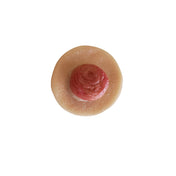The top 3 questions we get asked by customers purchasing injection training equipment are:
-
How many times can I inject an IV training arm?
-
How many punctures will an IV training arm take?
-
How often will I need to change an IV training arm skin?
There is a VERY good reason we can’t accurately answer these questions – there are SO many variables to consider.
The top 3 variables you can control are:
The size of the needle
We recommend using a 22 guage (blue) needle when practising venepunture and cannulation. The smaller the needle, the smaller the hole in the skin and the greater likelihood it will successfully reseal.
If you’re worried about the realism of the scenario being compromised, swapping the needle cap to a grey one, for example, may be a good solution. It is important clinician learns to reach for the right colour cannula in an emergency but using a smaller guage needle will prolong the life of your simulator.

Modern IV arms such as the BT Inc IV arm and Medicor Lab IV arm are constructed from silicone polymers rather than traditional PVC. Silicone reseals much better and often it is impossible to see any needle tracks after removing the cannula. Silicone arms do need looking after though and it can take time, usually overnight, for them to reseal fully.
How the simulator is maintained and stored
The seemingly invisible work of the Sim Tech is key here. When the session is over and the students have gone, the painstaking task of flushing out and cleaning the IV training arms begins.
Why is it important to flush out IV arms?
If you leave fluid in an IV arm, over time bacteria will cause mould growth. Mould and other particles will clog the vein tubing. This problem can be very expensive if you use a mechanical pump to simulate circulation because undrained fluid can damage it.
How should I look after IV training arms?
- Always use distilled or dionised water when making simulated blood. Distilled and deionised water has been through treatment processes which remove impurities and reduce the liklihood of mould-causing bacteria being present in the system.
- Drain the simulated blood after each session and flush the arm and pump with clean distilled or deionised water.
- Periodically flush the veins and pump with Isopropyl Alcohol, especiially if you are going to store the IV arms and not use them for a long period of time. IPA will kills any bacteria present in the system and stop mould forming.
The skill of the clinician
By this, we mean consider how skilled and experienced your clinicians are and use the appropriate IV training arm for their level.
Some IV arms are good for beginners, such as the BT Inc IV arms. Why?
- Easy to cannulate
- Consumables are the best value on the market
- Skin & vein pads can be replaced in 10 seconds
Some IV arms are more suited to intermediate and advanced clinicians, such as the Nasco Healthcare IV arms. Why?
- Multi-venous system for more realism
- Practise cannulating multiple sites
TOP TIPS FOR SUCCESSFUL INJECTION TRAINING
- Look after your injection training equipment by using small needles, clean fluids and storing them properly. Always follow the manufacturer’s usage instructions.
- Don’t just buy the cheapest, invest in the right tool for the job. Consider the lifetime cost of the simulator and if you’re buying consumables in bulk, ask for a discount. Or buy from Sim & Skills and we won’t make you ask.

























